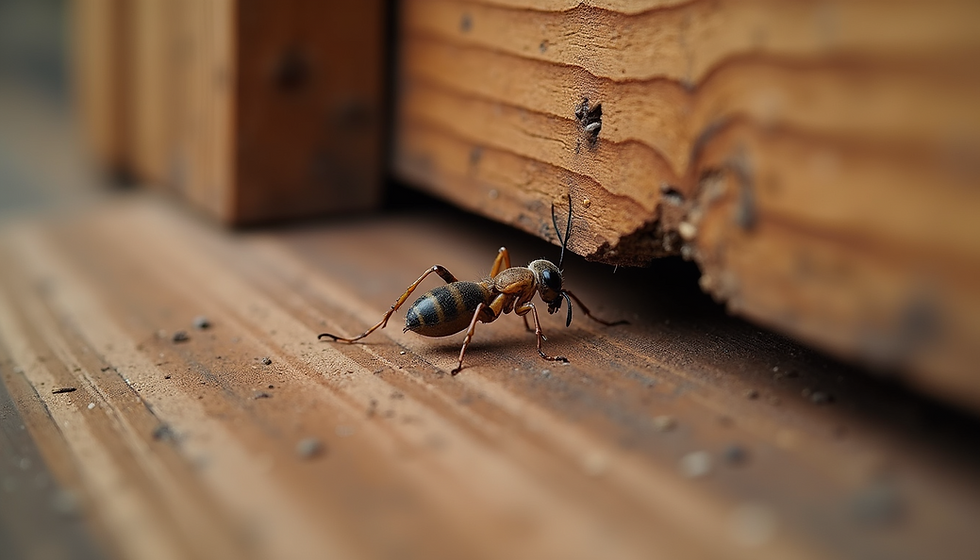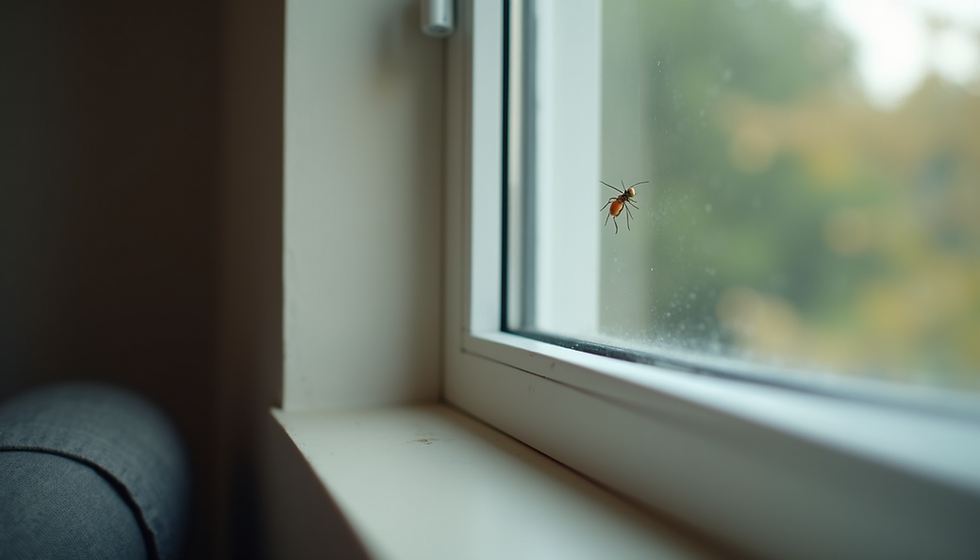Recognizing and Addressing Bed Bug Infestations
- Gorilla Pest

- Aug 11
- 3 min read
Bed bugs are small, elusive pests that can cause significant discomfort and distress when they infest homes or businesses. Recognizing the signs of a bed bug infestation early and knowing how to address it effectively is crucial to preventing a widespread problem. This article provides practical information on identifying bed bugs, understanding their behavior, and exploring the best treatment options available.
Identifying Bed Bug Infestations: Signs and Symptoms
Bed bugs are nocturnal insects that feed on human blood, often leaving behind telltale signs of their presence. Early detection is key to controlling an infestation before it becomes severe.
Common Signs of Bed Bugs
Bite Marks: Small, red, itchy welts on the skin, often in a line or cluster.
Blood Stains: Tiny blood spots on sheets or pillowcases from crushed bugs.
Fecal Spots: Dark, rust-colored spots on mattresses, bed frames, or walls.
Shed Skins: Bed bugs molt as they grow, leaving behind translucent skins.
Musty Odor: A sweet, musty smell may be noticeable in heavy infestations.
Where to Look for Bed Bugs
Bed bugs hide in cracks and crevices close to where people sleep or rest. Common hiding spots include:
Mattress seams and tags
Box springs and bed frames
Headboards and nightstands
Behind wallpaper or picture frames
Electrical outlets and baseboards
Regularly inspecting these areas can help catch an infestation early.

Close-up view of bed bug on mattress seam
Understanding Bed Bug Treatment: Methods and Approaches
Once an infestation is confirmed, choosing the right treatment method is essential for effective eradication. Bed bug treatment involves a combination of strategies tailored to the severity of the infestation and the environment.
Non-Chemical Treatments
Heat Treatment: Raising the temperature of infested areas to above 120°F (49°C) kills bed bugs at all life stages.
Cold Treatment: Freezing infested items at temperatures below 0°F (-18°C) for several days can eliminate bed bugs.
Vacuuming: Regular vacuuming removes bugs and eggs from surfaces.
Steam Cleaning: High-temperature steam can penetrate cracks and kill bed bugs on contact.
Chemical Treatments
Insecticides: Professional-grade insecticides are applied to infested areas. These include pyrethroids, desiccants, and insect growth regulators.
Dusts: Silica gel or diatomaceous earth dusts can be applied in cracks and voids to dehydrate and kill bed bugs.
Integrated Pest Management (IPM)
Combining multiple methods, including sanitation, monitoring, and chemical and non-chemical treatments, provides the best chance of success.
For those seeking professional help, Bed bug treatment Waco offers expert services tailored to local conditions.

Eye-level view of pest control technician inspecting bed frame
What is the Best Treatment to Get Rid of Bedbugs?
Choosing the best treatment depends on the infestation's size, location, and the occupants' preferences. Here are some of the most effective options:
Professional Heat Treatment
Heat treatment is highly effective because it penetrates all hiding spots and kills bed bugs and their eggs in one session. Professionals use specialized equipment to heat rooms or entire homes safely.
Chemical Treatment by Experts
Licensed pest control professionals apply targeted insecticides that are not available to the public. They know how to treat difficult-to-reach areas and minimize health risks.
Combination Treatments
Often, a combination of heat and chemical treatments yields the best results. This approach ensures that any bugs missed by one method are eliminated by the other.
DIY Treatments: Pros and Cons
While some homeowners attempt DIY treatments using sprays and traps, these methods often fail to eradicate the infestation completely and can lead to resistance.
Preventive Measures Post-Treatment
Encase mattresses and box springs in bed bug-proof covers.
Reduce clutter to minimize hiding places.
Regularly inspect sleeping areas.

High angle view of mattress encased in protective cover
Preventing Future Bed Bug Infestations
Prevention is the best defense against bed bugs. Here are practical steps to reduce the risk of re-infestation:
Inspect Secondhand Furniture: Avoid bringing in used mattresses or furniture without thorough inspection.
Be Cautious When Traveling: Check hotel rooms for signs of bed bugs and keep luggage elevated.
Regular Cleaning: Vacuum and clean sleeping areas frequently.
Seal Cracks and Crevices: Reduce hiding spots by sealing gaps in walls and furniture.
Monitor Regularly: Use bed bug interceptors under bed legs to detect early activity.
Taking Action: When to Call Professionals
If you suspect a bed bug infestation, acting quickly is vital. Professional pest control services have the expertise and tools to handle infestations safely and effectively. They can provide a thorough inspection, recommend the best treatment plan, and offer follow-up services to ensure complete eradication.
For residents in Waco and surrounding areas, professional help is available through Bed bug treatment Waco, offering reliable and efficient solutions.
By understanding how to recognize bed bugs and the best ways to treat them, you can protect your home and health from these persistent pests. Early detection, combined with effective treatment and prevention, is the key to keeping bed bugs at bay.


